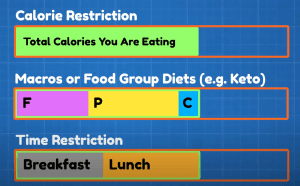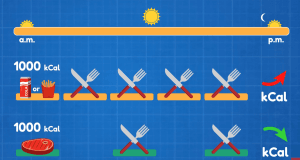1. Goal and Vision
Why Strength Matters
For me, getting stronger isn’t just about aesthetics—it’s about longevity. Strength training is an investment in my future, ensuring that I maintain mobility, independence, and resilience as I age. Muscle mass isn’t just about lifting heavier weights; it’s a key factor in longevity, metabolic health, and injury prevention.
Beyond muscles, I also believe in pushing my body through controlled stressors, like temperature changes. Activities such as swimming in cold water or alternating between a cold bath and a sauna put the body into a fight-or-flight state, triggering adaptation responses that improve resilience. These environmental stressors, combined with strength training, create a solid foundation for long-term health.
Learning from multiple sources allows me to refine my own strategy logically and effectively. My approach is heavily influenced by books and resources like :
- The 4-Hour Body by Tim Ferriss
- In Defense of Food by Michael Pollan
- Kurzgesagt – We need to rethink exercise
- Coach Viva – If I Had To Lose 20 LB Again In 1 Year, I’d Do This (Great if you want to lose weight)
The Three Stages of Fitness Progression
I break down my fitness journey into three stages:
- Unhealthy Stage: This was me at 79kg, relying on fast food, burgers, and pizzas as my main diet. I lacked energy, and my body felt sluggish.
- Good Stage: At 73kg now, I’ve significantly reduced fast food to once a week and improved my overall diet. My weight is more stable, and I feel stronger.
- Optimal Stage (Goal): My next step is refining my nutrition and training to maximize muscle mass while staying lean.
This progression isn’t about hitting a perfect number on the scale—it’s about continuous improvement.
Understanding Weight Fluctuations and Plateaus
A common frustration in fitness is weight yoyoing. The reality? Your weight naturally fluctuates due to water retention, glycogen levels, and digestion. The important thing is to focus on fat and muscle changes rather than obsessing over daily scale numbers.
Another issue I’ve encountered is plateauing, where no matter how much effort I put in, progress seems to stall. This is frustrating, but it’s important to keep going and trust the process.
Losing Weight
What I’ve learned is that almost all diet strategies—whether it’s keto, intermittent fasting, or low-carb—ultimately work by reducing overall calorie intake.
The key takeaway? Instead of obsessing over the method, focus on finding healthy, delicious food options that you enjoy. By making better food choices gradually, you build sustainable habits rather than relying on extreme restrictions.
If you are looking to lose weight, food is the biggest component. Exercise is more about building strength and improving overall health. Learn more from this video. [3] Kurzgesagt – We need to rethink exercise
As a logical learner, I stay motivated when I understand the reasoning behind things. That’s why this blog is structured around logic rather than emotional motivation—it’s about understanding why strategies work and applying them effectively.
2. Getting There and Actions
Food: Building Strength with the Right Nutrition
Food is the foundation of strength. While many diets focus solely on weight loss, my goal is to fuel muscle growth while staying lean. Here’s what works for me:
My Core Food Principles
Over time, I’ve learned to simplify strategies by distilling them into principles rather than rigid rules. Here are some of the key principles I follow:
- Keep It Simple – The best strategies are the ones you can stick to.
- Eat real food. Not too much. Mostly Plants – Michael Pollan Learn More
- Reduce 5 Whites – Sugar, salt, rice, pasta, flour.
- Reduce Dairy
- From 4-hour body Tim Ferris Slow-Carb Diet Principles: I follow a modified version of Tim Ferriss’ Slow-Carb Diet. This means reducing refined carbohydrates, focusing on protein, and keeping fats and fiber high for satiety.
- Eat legumes
It’s important to note that the negative effects associated with antinutrients and lectins can often be mitigated through proper preparation methods, such as soaking, sprouting, fermenting, and cooking, which can significantly reduce their levels and minimize potential health risks. I find dhall, tempeh, tofu, lentil soup, hummus and natto are easy ways to consume legume. - Reduce Starchy vegetables
- Reduce fruits -Tomatoes and avocado is ok
- Don’t drink calorie
- One cheat day per week Cheat Days with a Purpose: Once a week, I allow more flexibility in my diet. This isn’t about binging—it’s about keeping things sustainable and maintaining hormonal balance.
- Eat legumes
- Don’t Skip Meals, Just Adjust Timing – Early dinner (6 PM) and slightly late breakfast (9AM)
- Learning from Coach Viva: One key takeaway from Coach Viva is that weight loss isn’t about extreme dieting—it’s about small, sustainable changes that don’t feel like suffering. At its core, her approach can be simplified to maintaining a calorie deficit of 11-15%.
- All Diet strategies are just calorie reduction
Look at all the 3 main weight-losing strategies, they actually just reduce total calories, albeit using different parameter controls. Keto reduces macros and intermittent reduces time
- Satiety
The problem with junk food is not calories it’s satiety. Not all calories are built equal. So eating high-quality food keeps you satiated so you don’t overeat.
- Hormones
Hormones can reduce calorie burn. That is why there is no one strategy that works for everyone.
- All Diet strategies are just calorie reduction
Exercise Strategy: Training for Strength & Lean Muscle
Getting stronger isn’t just about lifting weights; it’s about building a balanced, functional body. My training includes:
- Strength Training: Compound movements like squats, deadlifts, and push-ups to build muscle efficiently.
- HIIT (High-Intensity Interval Training): Short bursts of intense activity to improve endurance and metabolism.
- Aerobic Training (Cardio in the Aerobic Zone): Activities like cycling or running to enhance cardiovascular health without burning muscle mass.
- Daily Movement Habit: I believe in working out daily, even if it’s light. Rest days are important, but early-stage consistency matters more.
3. Measure and Repeat: Building a Habit
Tracking Progress Beyond the Scale
Measuring progress isn’t just about weight. I track:
- Body Composition: Using a bioelectrical impedance scale to monitor fat vs. muscle.
- Circumference Measurements: Measuring my waist, arms, and thighs to track real changes.
- Strength Gains: Tracking reps, weights, and endurance to see improvements in performance.
Mindset & Long-Term Sustainability
Staying on track isn’t about motivation—it’s about habits. Here’s how I make it sustainable:
- Set Clear Challenges: Training for a triathlon, even though I prefer strength over endurance, gives me structure and motivation.
- Accept Plateaus: When progress stalls, I tweak my routine rather than giving up.
- Make Adjustments Over Time: What works today may not work forever, so I stay adaptable.
My routine:
- Drink 0.5L of water after waking up.
- Wait 30 Minutes, then measure your weight and body fat, muscles and bone.
- Workout
- Breakfast
This diet and my principles got me from unhealthy to good – 79kg to 73kg in 2 months.
- Breakfast: 2 eggs, cherry tomatoes, cucumber, and alternate between sausages, red beans and kimchi
- Lunch: Caesar salad and alternate between adding chicken breast or salmon.
- Dinner: chicken/pork/beef chop with steamed carrots.
After that I just kept to my principles and was able to maintain my weight at 73kg while ramping up workouts.
At the end of the day, strength is a long-term game, not a quick fix. My goal is to build a system where fitness becomes second nature—one where I don’t just get stronger, but I stay strong for life.
Final Thoughts
The process of getting stronger and leaner isn’t linear, but it’s simple: Set a vision, take action, track progress, and repeat. By focusing on habits rather than outcomes, I ensure that my fitness journey is sustainable for the long haul.
I’m still working on making this a consistent habit, but for now, it’s all about showing up every day and putting in the work! Let’s goooooo ..
Some Exercise Ideas
Goals
- 25×4 : 100 Push Ups
- 25×4: 100 Squats
- 10 Squats every 45 min(8 hours) instead of 10k steps is better.
- 10×2 : 20 Pull Ups
- Hand Stand





